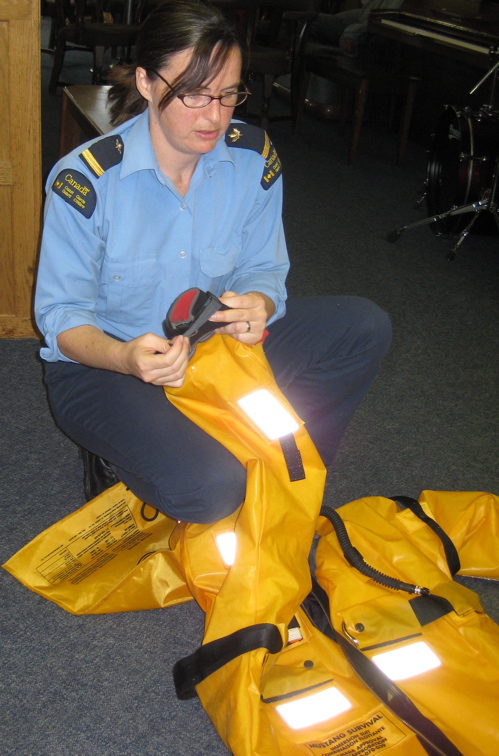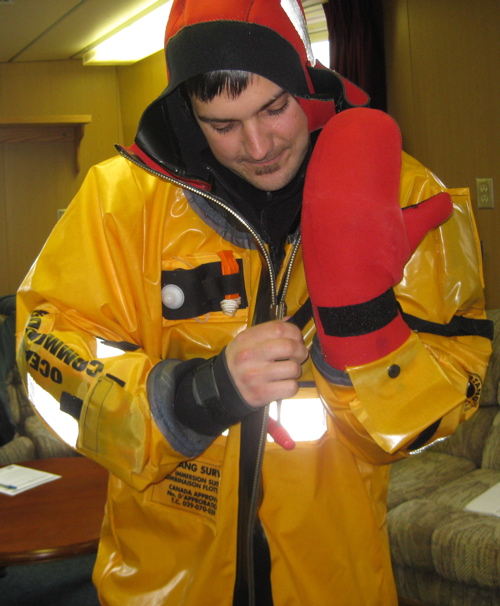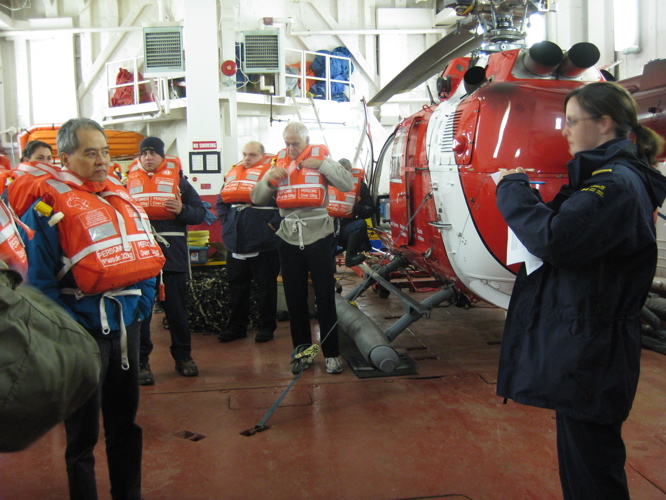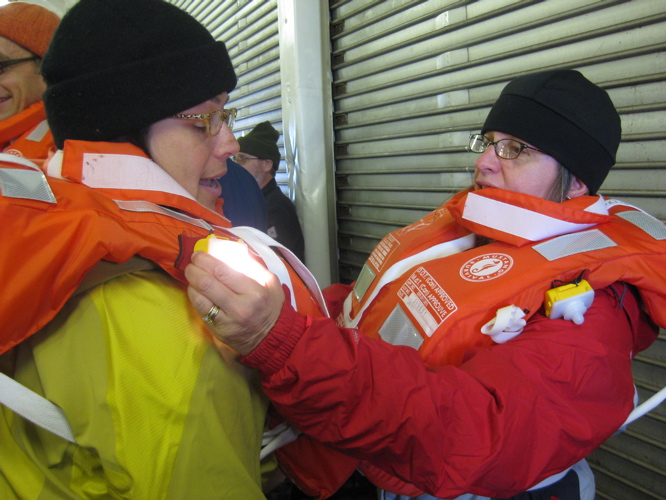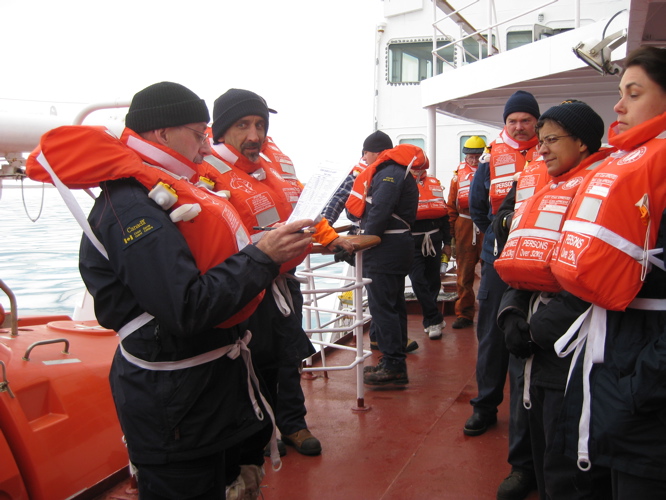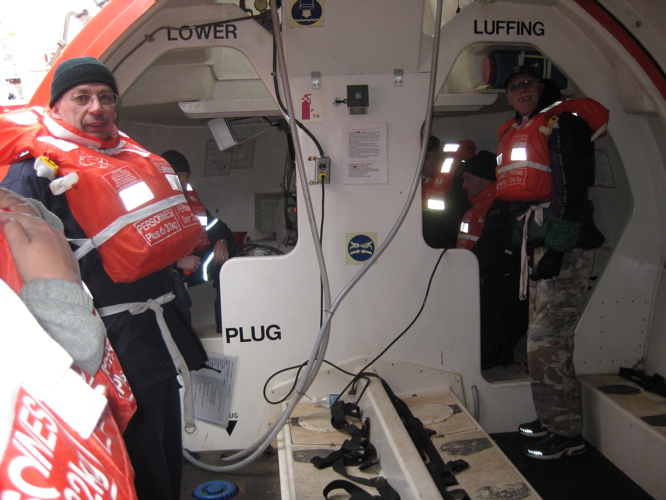Gerty WardJuly 19, 2008The first thing you learn when you get on a ship is how to get off. Today we went through several safety drills. We had a Ship Familiarization Session led by 3rd Officer Marian Punch. She instructed us on general ship safety and etiquette, and how to use the very important flotation suit.
While it may feel awkward and funny now, understanding its features, practicing putting it on and sealing up all the exits will greatly increase your chances of survival. Shortly afterwards we had fire and abandon ship drills. We donned our life jackets and warm clothes. We checked each other's equipment to ensure all is in order.
We then mustered at our assigned life boats. Chief Officer Stan Nunn called roll and ensures that we are all familiar with the life boats. Each has food, water, a med kit and a GPS beacon. While chances are very slim that these procedures will be ever be needed, familiarity and practice ensure that we will all be safe under any circumstances.
Because I will be joining work on the ice, I also went to a Helicopter Briefing Session led by Chris Swannell. He made sure we understood how to get safely in, and out of, the helicopter. Of course, it is a very cool machine. Check yesterday's journal for a video of my fly-in to the Louis. New Words- All photos by PolarTREC teacher Gerty Ward unless indicated. Last updated: October 7, 2019 | |||||||||||||||||||||||||||||
Copyright ©2007 Woods Hole Oceanographic Institution, All Rights Reserved, Privacy Policy. | |||||||||||||||||||||||||||||


